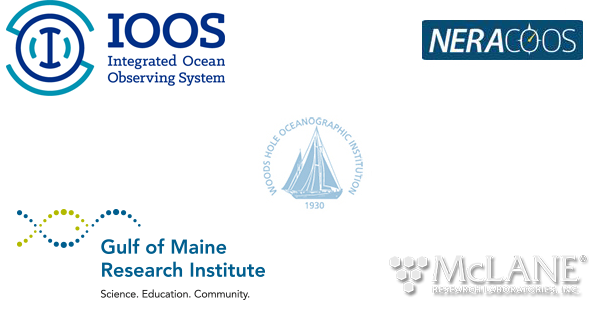The Environmental Sample Processor (ESP), developed by Monterey Bay Aquarium Research Institute (MBARI), is a biological sensor capable of detecting harmful algal bloom (HAB) species and their related toxins in the water and communicating these data to decision makers. The ESP can also be used to detect a variety of other planktonic organisms and some pathogens. The ESP is available commercially from McLane Research Laboratories, Inc.
Also known as “red tides”, HABs are associated with a diverse array of impacts, including human illness and death from the consumption of seafood contaminated with HAB toxins, mass mortalities of fish and other marine animals, and disruption of ecosystems. Harvesting closures cost commercial fisheries, public health, recreation, and tourism industries in the U.S. at least $82 million per year in direct costs. Shellfish harvesting closures are a safety measure that prevents dangerous products from entering the markets, thereby protecting human health and the viability of fisheries industries.
Through a National Science Foundation (NSF) Major Research Instrument award to Don Anderson at the Woods Hole Oceanographic Institution (WHOI), with additional support from the Environmental Protection Agency, and the U.S. IOOS Program Office of the National Oceanic and Atmospheric Administration (NOAA), six ESPs were purchased for use in the Gulf of Maine, along with four pressure housings, mooring hardware, and several instruments to provide contextual data. In 2011, funding from the NOAA Monitoring and Event Response for Harmful Algal Blooms (MERHAB) Research Program, part of NOAA’s National Centers for Coastal Ocean Science (NCCOS), was provided to support a phased deployment of these instruments in the Gulf of Maine that would augment state and federal monitoring programs for HAB-associated illnesses, such as paralytic shellfish poisoning (PSP) and amnesic shellfish poisoning (ASP).
Project Details
In FY13, IOOS’ Ocean Technology Transition project provided $340,000 to accelerate the transition of the ESP technology to operational use. The following was accomplished with this funding:
- Expanded Gulf of Maine ESP Instrument Deployment – Due to budget cuts, available MERHAB funding could only support one ESP instrument deployment for the 2014 HAB bloom season in the Gulf of Maine. Funding from IOOS allowed for the expansion of the network to three instruments concurrently operating at different locations along the coast (see figure). The ESPs were successfully deployed for 45 days between May and June 2014, and provided daily data during an extensive HAB outbreak. The deployments added critical data to weekly real-time forecasts of New England red tide, which are distributed to more than 150 coastal resource and fisheries managers in six states as well as federal agencies such as NOAA, the FDA and the EPA. Water temperature, salinity and chlorophyll, data from the Gulf of Maine ESP moorings are also available through the Northeastern Regional Association of Coastal Ocean Observing Systems (NERACOOS) data server. The expansion of the network is a major step towards the northeast ESP array envisioned as part of the NERACOOS observing network and as an integral part of state and federal biotoxin monitoring programs.
- Enhanced Reaction and Filter Puck - A major limitation to the duration of ESP deployments is the number of filter, or reaction "pucks" the instrument can hold. In the current design, 132 pucks are loaded, with three typically used for each measurement. This corresponds to 44 sample analyses per typical deployment. WHOI worked with McLane Research Laboratories to design and test smaller pucks, increasing the capacity of the ESP. One Gulf of Maine ESP will be retrofitted to accommodate the redesigned pucks, increasing the number of analyses to 60. This increased sampling capacity will provide more resolution on the HABs being monitored, while also reducing ship time and personnel costs for deployment and recovery operations.
- Model integration. NOAA is transitioning an existing numerical model of Alexandrium, a species related to toxin production leading to Paralytic shellfish poisoning, population dynamics in the Gulf of Maine to operational use as a regional HAB forecasting system. The model is used to provide weekly forecasts to managers, scientists, and other stakeholders in the region. Model simulations, however, need to be validated against measurements of Alexandrium population abundance. These comparisons had been possible through regional cruise survey data in the past, but these are no longer supported so other data are now needed for validation. Dennis McGillicuddy (WHOI) and Ruoying He (North Carolina State University) have posted comparisons between model output and ESP observations here.
More information on Harmful Algal Blooms can be found at:
http://www.whoi.edu/redtide
http://oceanservice.noaa.gov/hazards/hypoxia/welcome.html
For more information about IOOS’ Ocean Technology Transition Program, please contact Tiffany Vance, Project Manager.
 Official websites use .gov
Official websites use .gov Secure .gov websites use HTTPS
Secure .gov websites use HTTPS

.jpg)